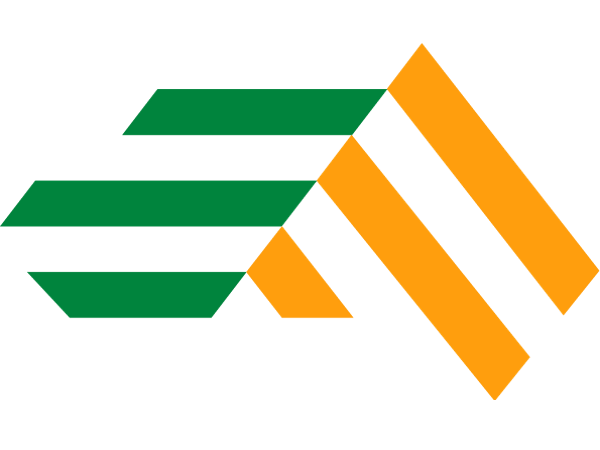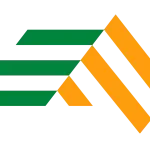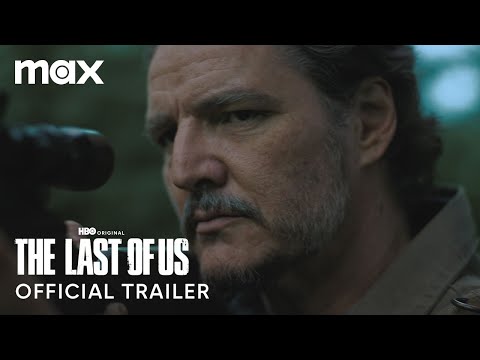Major League Gaming, often referred to more simply as MLG, is a professional eSports organization which runs a massive range of tournaments and events across the world. Founded in 2002 by entrepreneurs Sundance DiGiovanni and Mike Sepso, the organisation is based in New York City, and aims to make competitive esports as professional and commercially successful as possible.
The organisation’s tournaments have taken place every year since 2004, being staged in a host of cities across the United States and Canada, and often covered on television. In addition to staging tournaments, the organisation has also been involved with games development.
In early 2016, the brand was acquired by gaming giant Activision Blizzard, who plan to use the brand to help build a television network which is focused on esports. The organisation’s logo deliberately mimics the style of other mainstream, ‘major league’ sports organisations in the USA, such as the NBA and NHL.
The MLG professional circuit features a number of games. Originally, the tournaments staged by MLG featured Halo and Super Smash Brothers contests, but the concept has widened in recent years.
Gears of War, Rainbow Six, Shadowrun, Call of Duty, World of Warcraft, Tekken, Starcraft 2, League of Legends and Mortal Kombat are all games which have featured at Major League Gaming events. In 2016, Counter Strike: Global Offensive was added to the roster of disciplines.
2004 – 2008: Putting down roots
Halo: Combat Evolved was one of the main games played at the MLG national championship tournaments in this era. It was played in the Free-for-All game mode, 2×2 and 4×4 tournaments, with United States dominating the prize-winning line-ups.
Alongside Halo, teams also competed in other esports, including Super Smash Brothers, which was played in melee format, with 1×1 and 2×2 contests taking place. Again, players from the USA dominated proceedings, although Japanese player Captain Jack managed to take a third place in the 2004 1×1 event. This was a very rare departure from the norm in these early years of the Major League Gaming concept’s history, however.
Evolving with the times
From 2005 through 2007, Halo 2 replaced Halo CE, though the nationality of the successful teams and players tended to remain just as American as before. In these early days of professional esports, it was still unusual for players and teams to travel as widely as they do today.
During these years, teams such as OGRE, Team Domination, Filthy Jackalopes, Karma and Team 3D were amongst those who enjoyed success in the Halo events. Players such as Ken Hoang, PC Chris and Isai won tournaments in the Super Smash Brothers events.
The culminating tournaments of the season were held in New York City in 2004 and 2005, but the venue switched to Las Vegas in 2006, 2007 and 2008. MLG events during the regular season were staged in venues across the USA. Cities which staged events in 2004 included Atlanta, Seattle and San Francisco, as well as Chicago and Dallas.
In 2007, fans saw Rainbow Six added to the roster of games, being played over a 4×4 Vegas format. The rainbow Six Legends took the title that year, before being succeeded in 2008 by English team MoB Cameo. For 2007, Super Smash Brothers games were removed from the line-up, and replaced by Gears of War and Shadowrun. Infinity won the first Gears of War title, while Three Shot Killers were the 2007 Shadowrun champions.
For 2008, the concept took a major step forward, when Call of Duty 4: Modern Warfare was added to the list of games. American team xiNFecTioN took the first CoD title, with Team EnVyUs in second place. From now on, CoD would be the game which would draw many of MLG’s biggest crowds, and much of the wider media attention. From here, we will focus mainly on the impact that Call of Duty has made on the Major League Gaming concept.
2009 – 2011: Cod reigns supreme
In 2009, the CoD National Championship took place in Anaheim, California, and Xtravagant took home the title of champions, winning a first prize of $8,000. Coming second were Team EnVyUs, who won $4,000. Team FeaR and Genesis completed the top four. Xtravagant’s roster of players that year included Canadian star Raymond ‘Rambo’ Lussier, for whom this would be the first title of many in a glittering career.
In 2010, the prize pot on offer for the CoD championship winners had risen to $12,000, and a team known as influence would be successful in their attempt to claim it. Craig ‘PLuTo’ Walker was one of the stars of the team’s line-up for that year, another player for whom the event would help to trigger a solid career in esports.
VwS LeveraGe took home the second prize of $6,000, with HSG Xtravagant in third. Rambo was once more to the fore for the third placed team, who won $3,000 and finished above OpTic Gaming, who won $2,000. OpTic’s line-up that year was led by Matt “NaDeSHoT” Haag, another player who is now retired, but used the tournament as a springboard to a glittering career in competitive CoD.
Serious prizes on offer
By 2011, the setting for the MLG National Championship was Providence, Rhode Island, and the prize pot had risen to a total of $140,000, $50,000 of which would be awarded to the winners. A team with an almost unpronounceable name, Quantic Nex-TT-hreat, would take home that first prize, beating EnVyUs into second place.
Third and fourth places would belong to OpTic Gaming and ApeX.Collapse respectively. Rambo was still on the scene, too, though his efforts could not help his team, Xtravagant, to higher than a fifth placed finish. Their winnings of $10,000, though, may have gone some way towards easing the pain of finishing outside of the top four.
During this period in the concept’s history, other games added to the ranks of MLG games included Starcraft 2 and League of Legends, two of the most popular esports disciplines on the scene. This was a sign of just how much the MLG concept was growing, and a sign of its ever expanding reach. Lee ‘Leenock’ Dong Nyoung, a South Korean, would take home the SC2 title in 2011, while that year would also see Team SoloMid win the title in the League of Legends tournament at the end of the season. Halo still featured on the roster of MLG games too, though it would not be many years before it would be phased out of competitive play.
2012 – 2016: Even more games shown
The number of tournaments and the season format changed for 2012, with the National Championships being abandoned in favour of a series of winter and summer championships, staged in different cities throughout the year. Call of Duty was also not one of the MLG games during this year.
The Winter Championship for 2012 was staged in Columbus, Ohio, and featured tournaments in Starcraft 2, Mortal Kombat, King of Fighters XIII, Soul Calibur and Halo. League of Legends replaced Halo on the line-up for the Spring Championship in Anaheim, but the roster of games was cut again for Raleigh’s Summer Championship, with King of Fighters being abandoned. For the Fall Championship, staged in Dallas, SC2, Halo 4, Tekken Tag Tournament 2 and Mortal Kombat were played alongside LoL.
The Winter and Spring Championship
By the time that 2013 rolled around, and the Winter Championships were staged in Dallas, Call of Duty was back on the list, with Black Ops 2 producing some fine entertainment for spectators. A total of $50,000 was at stake for the teams who competed, and it was Fariko Impact who went on to claim the first prize of $20,000, with UNiTE Gaming finishing second, and winning $12,000. Fariko Impact featured a Canadian player called Damon ‘Karma’ Barlow, who would later go on to play for OpTic Gaming, and even later for Team EnVyUs.
Two further significant tournaments were played in 2013. At the Spring Championship, in Anaheim, three games featured on the bill. Alongside Call of Duty: Black Ops II, SC2 and LoL tournaments were played. South Korean player Choi ‘Polt’ Seong Hun took the Starcraft title, while American team FXOpen won the LoL title.
As for Call of Duty, it was Americans who triumphed here too, with CompLexity Gaming taking the $50,000 first prize. The team would follow up that triumph with another tournament win at the Fall Championship in Columbus later in 2013. At that event, Speed Gaming would take the title in the only other sport played, Dota 2.
Growing ever larger
As 2014 passed, the number of MLG events grew even larger. CompLexity Gaming continued their run of success in the CoD events, winning the MLG CoD League Season 1 Playoffs in Boston, in April. As the series moved to Anaheim in June, Evil Geniuses were again to the fore, winning the MLG Anaheim 2014 International Playoffs. The Call of Duty World League Championship season three play-offs were staged at Columbus in October, and Team EnVyUs took the $75,000 first prize. FaZe Clan won the last CoD event of 2014, winning the MLG Columbus Open, and a first prize of $25,000.
In 2015, there were play-off events at Columbus and Austin, both of which were won by OpTic Gaming, whose strong performances ensured that they won the $75,000 first prize at both tournaments.
At the MLG Pro League Season 3 Playoffs, held in Columbus in September, OpTic were beaten into second place by FaZe Clan, who took home the first prize of $175,000. But OpTic returned to form for the Call of Duty World League Championship Finals, held in New Orleans in October. They won that event, and a cool quarter of million dollars as first prize.
There were two major events in 2016. At the MLG Anaheim Open in June, OpTic Gaming were once again at the top of the tree, claiming the $40,000 first prize. At Orlando in August, OpTic repeated that feat, beating Team EnVyUs in the final, and claiming another $40,000 in winnings.
Conclusion
The Major League Gaming brand has become an iconic part of the professional esports scene over the last decade and a half. Its Call of Duty World League Championship events draw thousands of fans, both in attendance at venues and watching live streams online or on MLG TV, while there has also been a steady record of progress in the other esports disciplines covered by the organisation.
With a solid history of success behind it, Major League Gaming, already an iconic brand, seems set to establish itself in the near future as not just an important feature of the esports scene in North America, but as a key player in the mainstream sports media world too.





